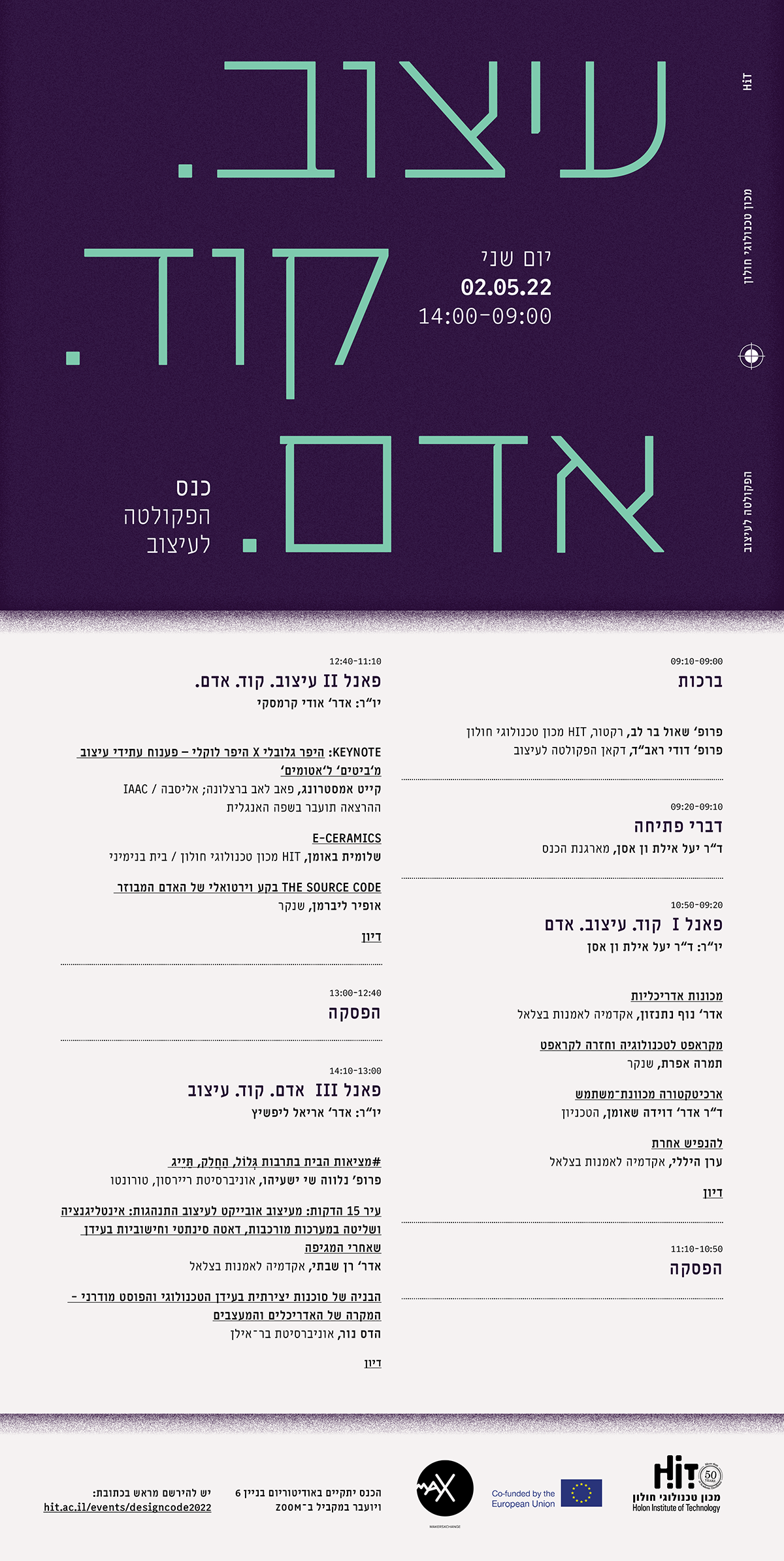
Conference chair and introduction lecture / Design – Code – Human, HIT, Design Faculty, 2.5.2022

Design – Code – Human
Code-based design existed before the computer age when designers based their designs on predetermined patterns. Although complex patterns and numerous variables and parameters were used, the level of complexity that could be attained using analogue tools was limited. The use of computer algorithms expanded the range of possibilities in applying code-based designs in a way that substantially changed all aspects related to the designer’s work. Currently, there are almost no areas of design that do not involve computer code, even those previously linked to manual labour and relied on long-standing traditions.
With the transition from analogue to digital design, code-based digital tools became the new working tools for planning and producing design artefacts. Technologies such as artificial intelligence (AI), virtual reality (VR), augmented reality (AR), big data, open source, and, needless to say, the Internet, make it possible to design the world differently, offer new aesthetics, and enable new types of interactions with real and virtual entities. These technologies open new horizons for the design discipline, exposing the designer to possibilities beyond the scope of human intuition and standards that were not previously thought of. With the new tools, we design smart environments, can “communicate” with objects, assimilate into virtual spaces, influence phenomena that we previously considered “natural”, and intervene in the behaviours of materials by changing their genetic code. As a result, new technologies change how we encounter the world, affect our sense of time and space, and bring us together with new experiences.
This lecture, which opens the Design – Code – Human conference, examines the areas where the use of code produces a significant transformation both concerning the designed objects and spaces (physical or virtual), and in relation to the design processes and the ‘territories’ where designers operate. This transformation will be examined in a broad range from the point where the designer is the central generator of the design object up to the stage where the machines begin to be autonomous and perform operations that are considered ‘creative’ and, therefore, human participation becomes, apparently, redundant. The lecture will propose to see the integration of code in the design process not only as an instrumental addition to the designer’s toolbox but as a factor that brings about a profound change in the way we function in the world and experience it as human beings.